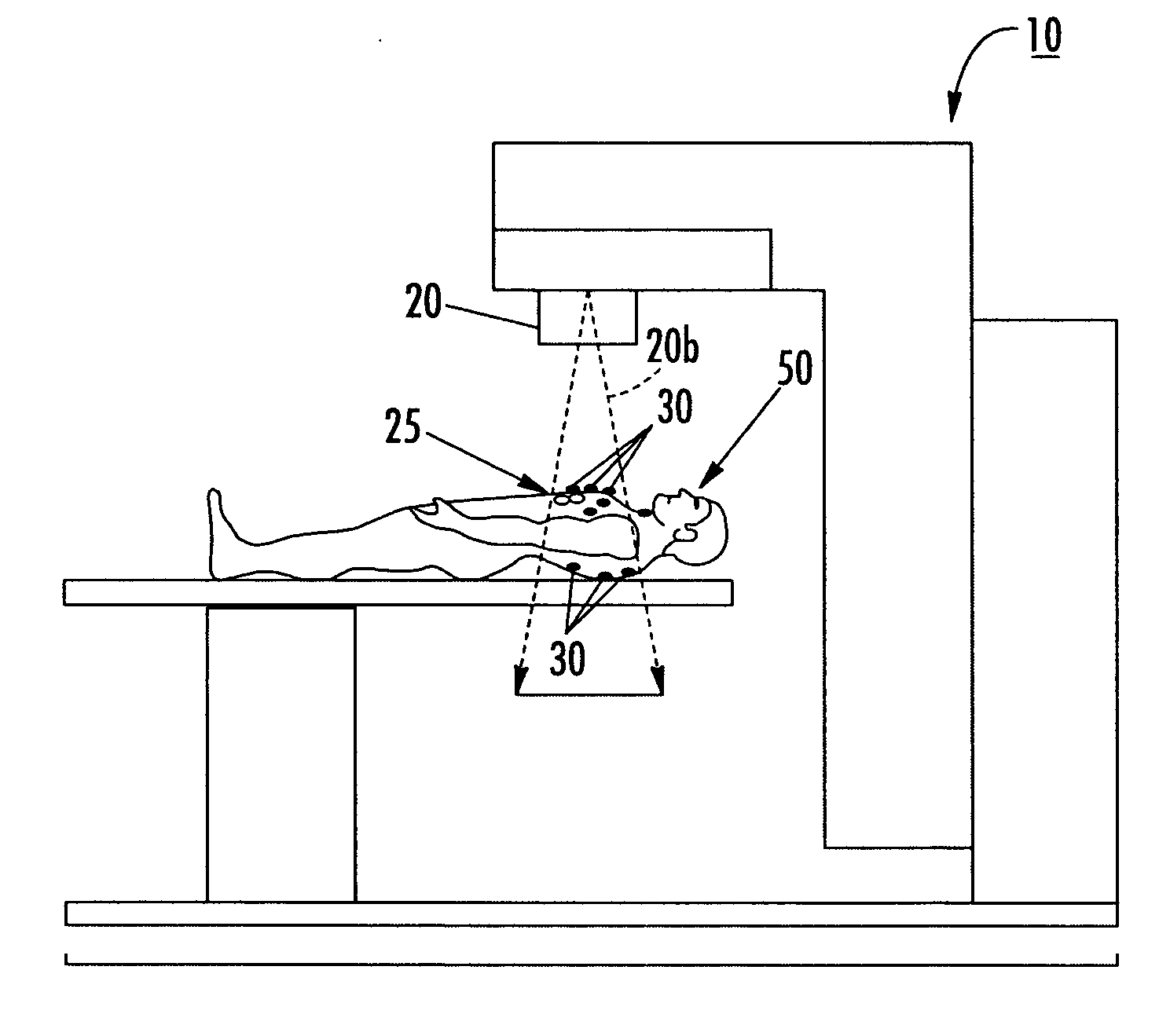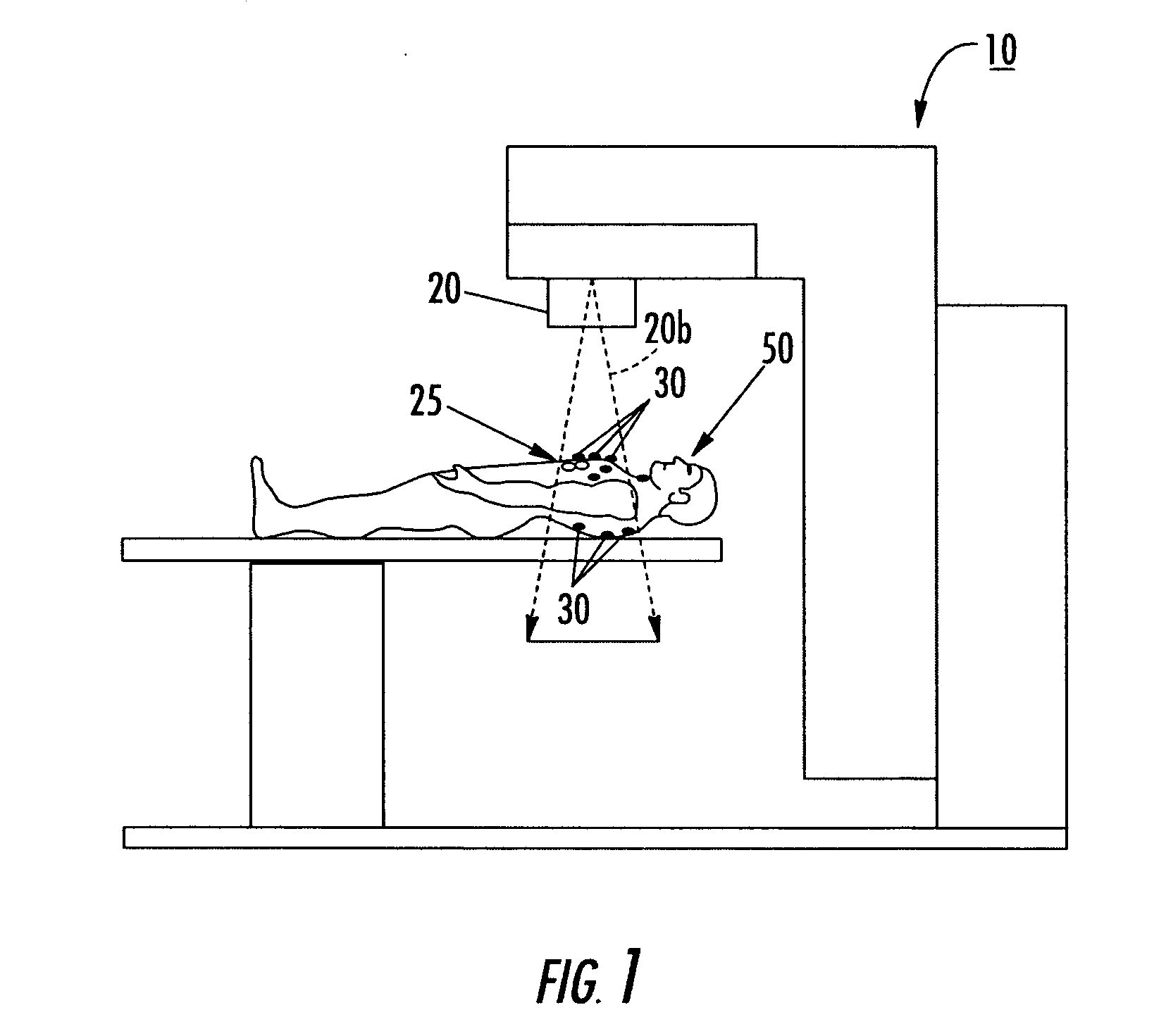Single-use external dosimeters for use in radiation therapies and related methods, systems and computer program products
a radiation therapy and external dosimeter technology, applied in the field of single-use external dosimeters for radiation therapy and related methods, can solve the problems of inability to accurately determine the dose amount of radiation actually received by the targeted tissue, inability to accurately detect the radiation intensity of the target tissue, etc., to achieve cost-effective effects
- Summary
- Abstract
- Description
- Claims
- Application Information
AI Technical Summary
Benefits of technology
Problems solved by technology
Method used
Image
Examples
Embodiment Construction
[0080] The present invention will now be described more fully hereinafter with reference to the accompanying figures, in which embodiments of the invention are shown. This invention may, however, be embodied in many different forms and should not be construed as limited to the embodiments set forth herein. Like numbers refer to like elements throughout. In the figures, certain components, features, or layers may be exaggerated for clarity. In the block diagrams or flow charts, broken lines indicate optional operations, or features unless stated otherwise. As used herein, the term "and / or" includes any and all combinations of one or more of the associated listed items.
[0081] The terminology used herein is for the purpose of describing particular embodiments only and is not intended to be limiting of the invention. As used herein, the singular forms "a", "an" and "the" are intended to include the plural forms as well, unless the context clearly indicates otherwise. It will be further ...
PUM
 Login to View More
Login to View More Abstract
Description
Claims
Application Information
 Login to View More
Login to View More - R&D
- Intellectual Property
- Life Sciences
- Materials
- Tech Scout
- Unparalleled Data Quality
- Higher Quality Content
- 60% Fewer Hallucinations
Browse by: Latest US Patents, China's latest patents, Technical Efficacy Thesaurus, Application Domain, Technology Topic, Popular Technical Reports.
© 2025 PatSnap. All rights reserved.Legal|Privacy policy|Modern Slavery Act Transparency Statement|Sitemap|About US| Contact US: help@patsnap.com



